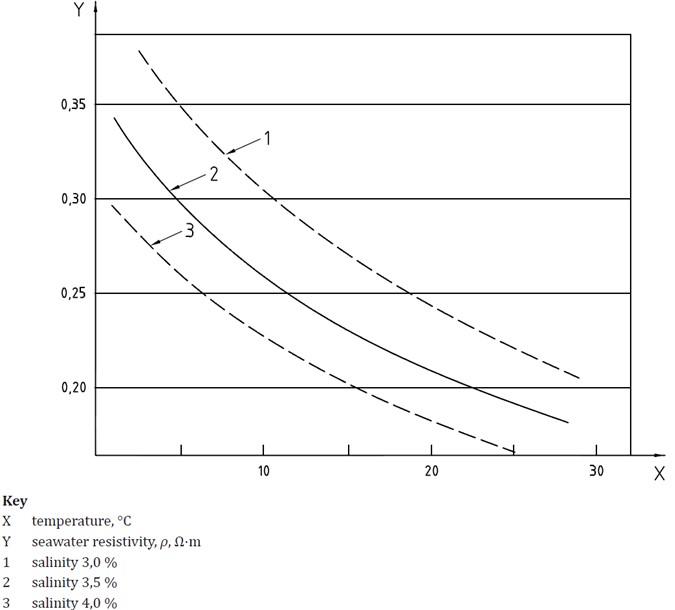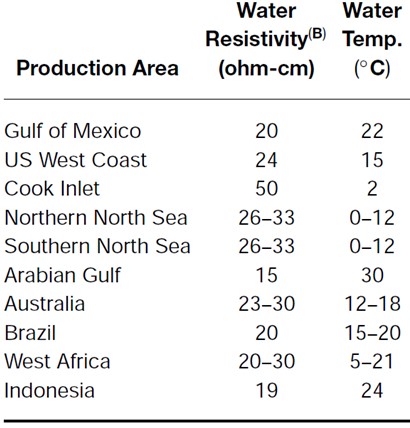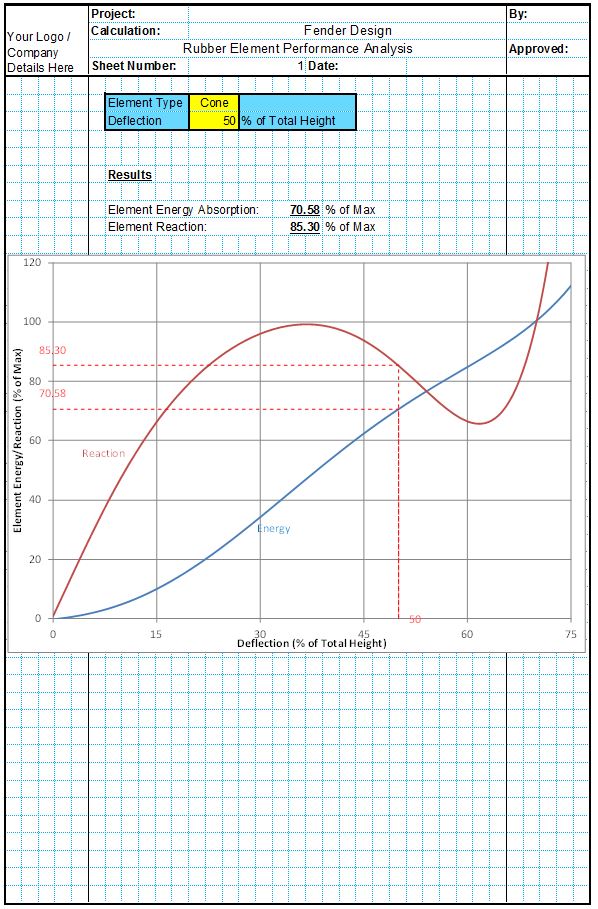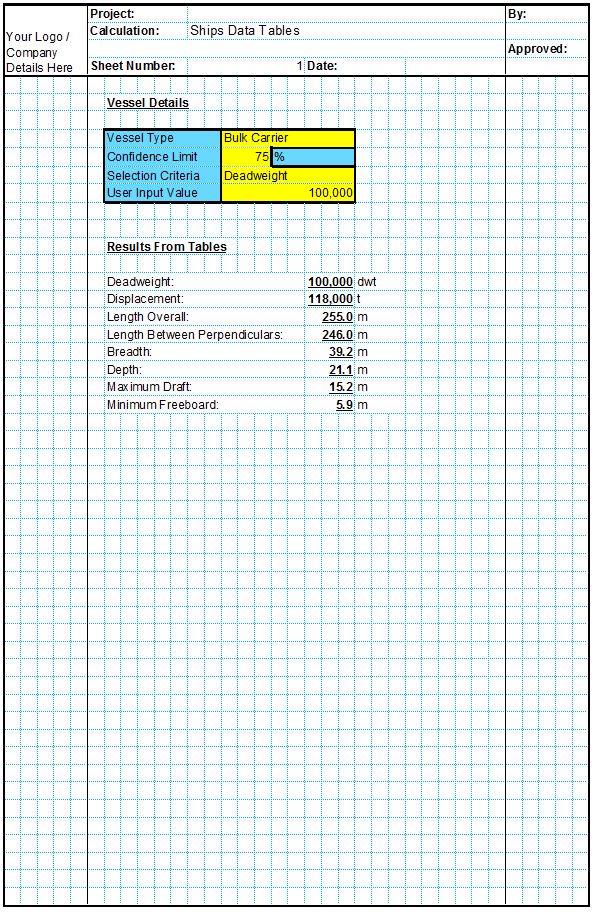Other than the anodes shape the other factor affecting the anodes resistance is the resistivity of the seawater. The CivilWeb Cathodic Protection Design Spreadsheet allows the designer to design cathodic protection systems in water of any resistivity.
It is important that resistivity measurements are taken at the location of the proposed cathodic protection as the resistivity of the seawater can vary widely and has a big impact on the anode design. Where local measurements are not possible or for preliminary design, the following typical values can be used. The CivilWeb Cathodic Protection Design Spreadsheet also includes a handy tool for estimating the resistivity of seawater from the salinity.
Resistivity of Seawater - Open
In open seawater the resistivity is a function of the waters temperature and salinity. In open water the salinity does not tend to vary significantly, therefore the temperature is the main factor. In this case the following graph can be used to estimate the sea water resistivity;
A conservative value of around 0.30 ohm-m is often used in temperate regions for preliminary design.
Typical values for some specific regions are shown below;
Inshore, Tidal Rivers and Bays
In these areas the salinity can vary significantly depending on the location and depth of the anodes. For this reason it is advised that the water resistivity is measured prior to detailed design. The design value should be an annual average which takes account of seasonal and tidal fluctuations and takes account of the proposed anode depths.
Marine Sediments
This will vary depending on the conditions and the type of sediment. The resistivity of soft clays are often around twice as high as the water resistivity, and the resistivity of sands are often 5 times higher. Where better information is unavailable, conservative values of around 1.30-1.70 ohm-m are often used for preliminary design.



